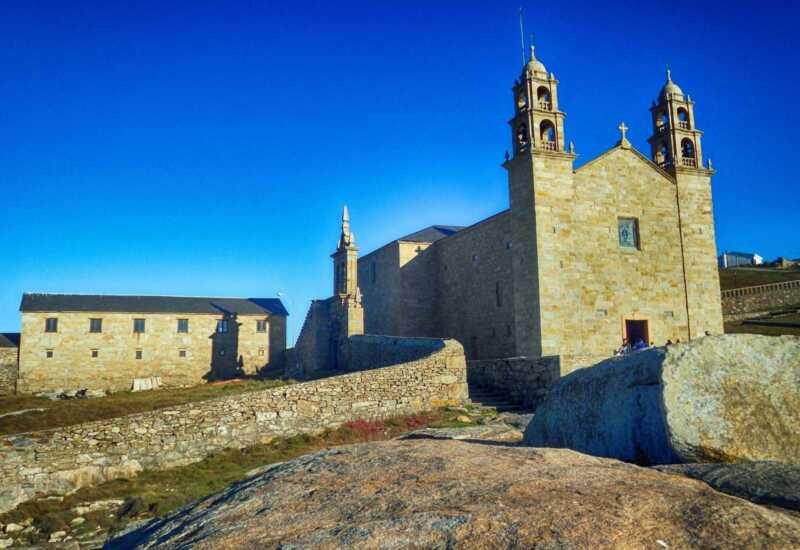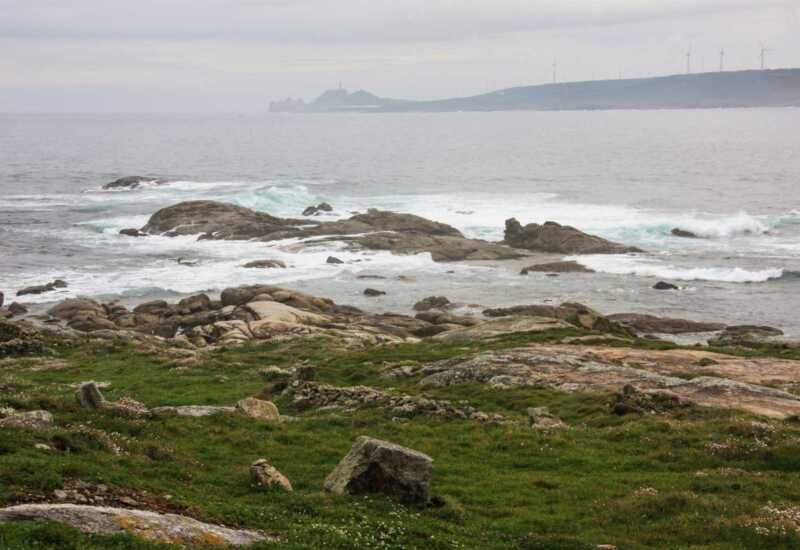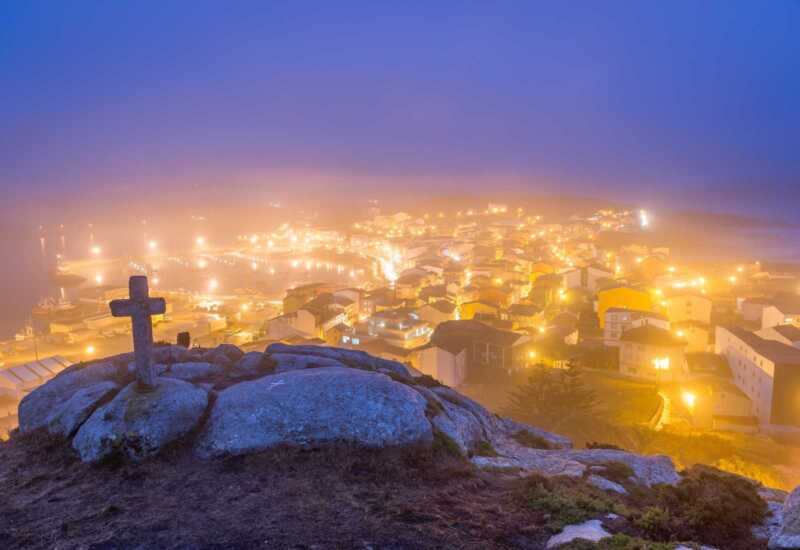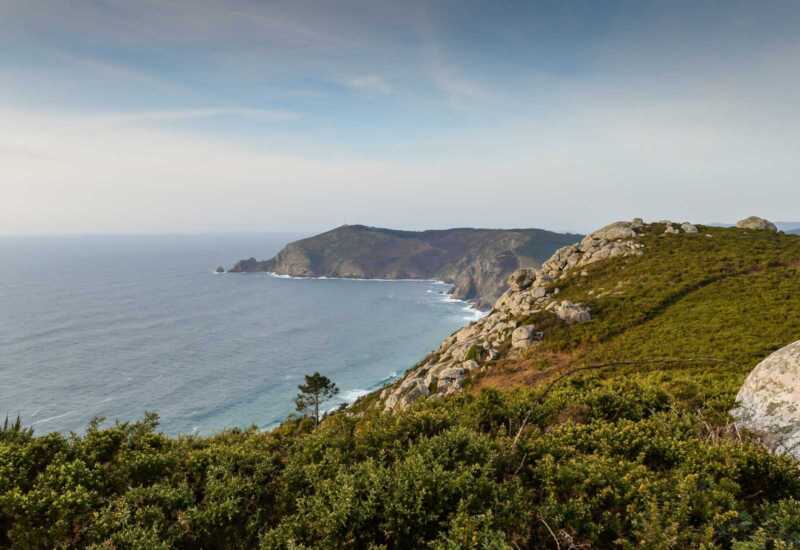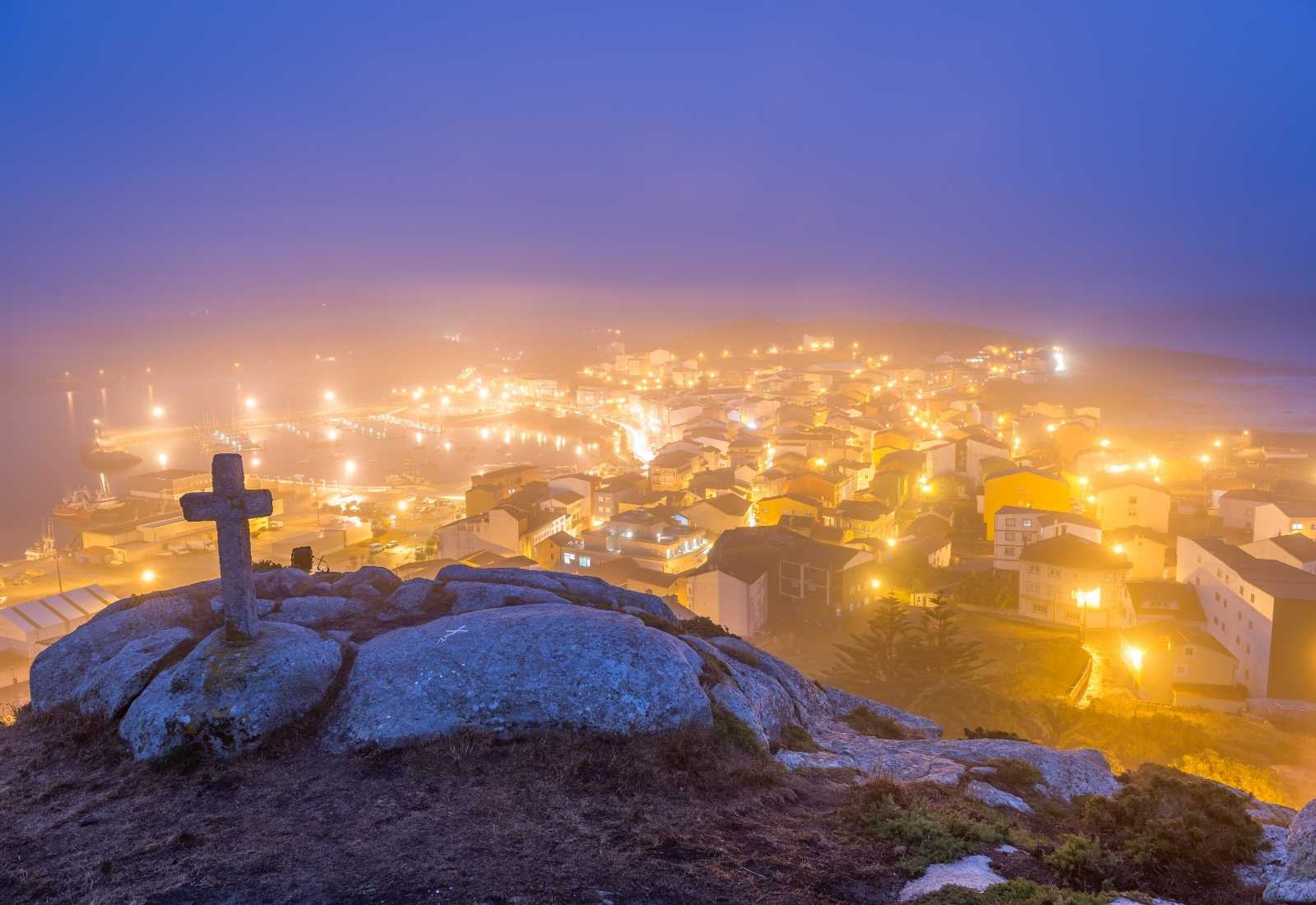
Information about Muxía
Muxía is the last destination located in the epilogue of the Camino de Santiago, “the Way to the End of the World”. This beautiful coastal town is located in the heart of the Galician Costa da Morte and keeps within its boundaries legends and myths of great religious symbolism.
Good gastronomy, sea, beach and heritage are the main attractions of this small coastal town. What more could you ask for to enjoy a weekend or a few days of rest after doing the Camino de Santiago or the Route of the lighthouses? In this article we tell you everything you need to know to plan a getaway to this sanctuary on the Costa da Morte.
A little history
Muxía is the last episode of the route that goes from Santiago de Compostela to Fisterra and then Muxía. More and more people are embarking on this last stretch, known as the epilogue of the Camino, because of its spiritual significance and renewal.
Why do people go on pilgrimage to Muxía? Because legend has it that the Virgin Mary travelled to Hispania after learning that the apostle James was preaching there. On its journey by sea, the boat of the Virgin arrived at the coast of Muxía. It is for this reason that the Santuario da Barca exists on the Muxian coast.
Pilgrims who finish their journey in Muxía, obtain a specific certification known as “Muxiana”, which is issued at the Tourist Office by the town council.
What to see and do in Muxía
Sanctuary of Virxe da Barca.
This sanctuary is located on the rocky coast of the village. Its location and its mysticism are two of its main characteristics. This location, so close to the roughness of the Atlantic, has caused some damage, so it has had to be rebuilt on more than one occasion. It is a temple very loved and venerated by the Galician faithful, which has its pilgrimage in the month of September each year. The legend about the arrival of the Virgin to this point of the coast, has made that nowadays there are coastal rocks that have a special meaning or mysticism:
Pedra de Os Cadrís.
This rock is said to have healing properties. If you pass 9 times under it, you will be cured and free from kidney-related diseases and back pain. This rock is also a symbol of the sail that carried the Virgin’s boat.
Pedra do Timón.
Its shape is said to be reminiscent of the rudder that may have been part of the Virgin’s boat.
Pedra dos Namorados.
It is a rock loaded with love, for being the point where supposedly lovers swore eternal love to each other.
Pedra de Abalar.
One of the most important in religious symbolism. Legend has it that whoever manages to move the stone is free from sin.
More Religious heritage.
Apart from the Virxe da Barca Sanctuary, Muxía has several other religious monuments. Fundamentally these are the Romanesque temples of: Santa María de Morquintián, Santa María, Santa Leocadia de Frixe, San Xiao de Moraime, San Martiño de Ozón and San Cristovo de Nemiña. In addition, there are 12 more chapels and churches.
Paseo del río Negro.
In this fluvial path located in Os Muíños, in the parish of Moraime, you will be able to enjoy the typical architecture of its seventeen restored mills. Moreover, the walk ends directly at the mouth of the river on the coast, at Areamaior beach.
Museum of Volunteering
Muxía, was one of the places on the Galician coast that suffered the most from the Prestige disaster. For this reason, in the village there is this museum that commemorates the work of all those volunteers who threw themselves into helping without thinking twice to clean the coasts of the oil slick of the chapapote. The museum collects as a photographic narrative the whole process of what was this tragedy.
Caldeiras de O Castro
This is one of the most outstanding tourist spots in Muxía. Here, because of the substratum, the river makes a kind of jump similar to a waterfall and several pools are formed as natural pools. Landscape-wise the area is very beautiful and curious. There is a hiking route of 15 kilometers to make the environment and also there is the chapel of Santo Outel and a picnic area where you can stop for lunch.
Viewpoint of Monte Facho Lourido
It is considered one of the best viewpoints in Muxía. From there, you will have spectacular views of the entire coast and the village.
Cape Touriñán
Although almost everyone thinks that the westernmost point of Galicia is Fisterra, this is not true. The truth is that Fisterra, by its own name took the popularity of being the point where the land ended on the Atlantic, but the truth is that Cape Touriñán is the true westernmost point of Galicia.

